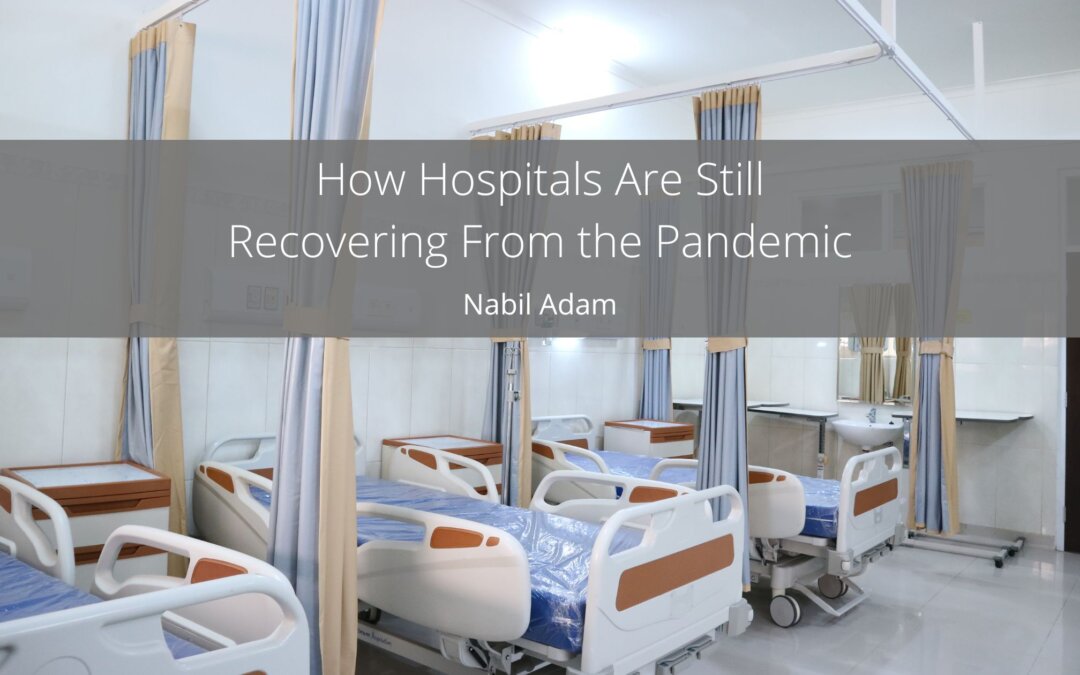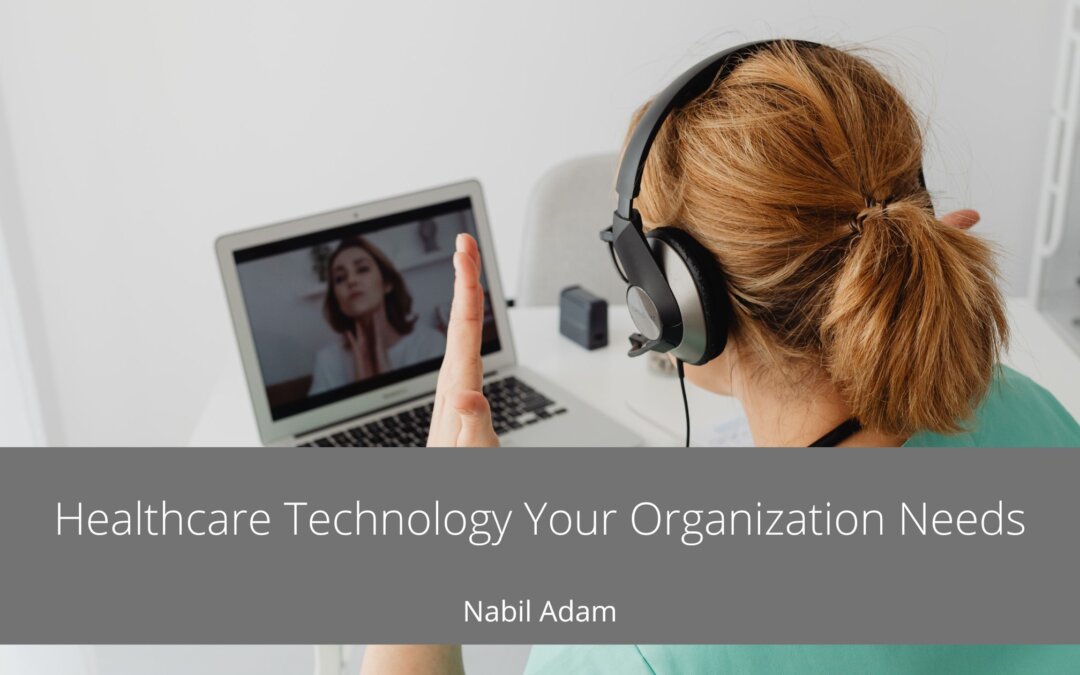About Nabil
Nabil Adam is a highly distinguished Professor Emeritus at Rutgers University. He specializes in cybersecurity, machine learning, healthcare technology, and clinical/healthcare informatics. Dr. Adam is one of the most accomplished professionals in these industries, which has earned him over six prestigious awards, some multiple times. As per the 2020 Stanford University report, Dr. Adam ranked among the top 2% of scholars worldwide regarding their impact in their field (AI and Image processing).
Throughout his career, Nabil wrote prolifically and has written over 200 publications and 11 books. Not only is he a successful professor but Nabil mentors Ph.D. students, speaks at conferences on a variety of subjects both nationally and internationally, holds chairman and vice-chairman positions on over 20 boards, and has founded/co-founded nine initiatives for Rutgers University and various award-winning organizations. Nabil holds a B.S. in Engineering from Cairo University, two Master’s degrees, and a Ph.D. in Engineering from Columbia University.
For the past 43 years, Nabil Adam has held a faculty position at Rutgers University and recently established himself as an integral faculty member at the New Jersey Medical School, where he teaches Medicine. Nabil strives to assist his students in their academic success as much as possible and has mentored over 20 Ph.D. students with their theses and research. Dr. Adam has not confined his teaching prowess to the United States. Instead, he undertook visiting professorships in the Netherlands as well.
A passionate researcher in his field, Nabil Adam was awarded in a grant in early 2023 for him and his team to continue their research on “Racial Disparities in Cancer Therapy-Induced Adverse Events.” This project is in collaboration with Dr. Robert Wieder, a Professor at Rutgers New Jersey Medical School. Nabil and his entire team are excited to have received this grant from Amazon Web Services in order to continue their diligent research.
Outside of his teaching duties, Nabil spent over five years with the Department of Homeland Security, where he was assigned to the Science & Technology Directorate. He was responsible for mentoring scientists, engineers, and program managers, while simultaneously managing “Modeling, Simulation, and Analysis” and leading the “Cyber-physical Systems Security” and “Unified Incident Command Decision Support” initiatives. Additionally, Nabil was assigned to the position of Program Chair for a variety of related committees and workshops including Modeling, Simulation, & Analysis for Homeland Security, Emergency Management: Incident, Resource, & Supply Chain Management workshop, and Future Directions in Cyber-physical Systems Security to name only a few.
Several years prior, Nabil Adam worked as a Research Fellow for the NASA Center of Excellence in Space Data and Information Sciences. This program was created to bring leading computer scientists together to collaborate and conduct research applicable to space and earth sciences; Nabil was one of the chosen few and took part in several initiatives including the Management of the Largest Unclassified Archive in the World, Data Warehousing/Mining of Earth Observing System Data & Information Systems and Geodata Modeling and Query in GIS. Dr. Adam also participated in the commercialization of Linux/Red Hate software and served as a member of the scientific and management team whose purpose was to establish a commercial sector for the Universities’ Space Research Association.
Each year, Nabil Adam is invited as a keynote speaker to a wide variety of talks and conferences around the globe. To date, Nabil has given over 50 talks on topics in which he specializes, such as Next Generation Information Technologies and Systems, Informational Technology Applications in Biomedicine, Cyber Security Challenges around the World, and spoke at the International Conference on Higher Education.
Dr. Nabil Adam was invited to attend the National Institute on Drug Abuse (NIDA) Genetics and Epigenetics Cross-Cutting Research workshop held in May 2023 on the National Institute of Health (NIH) Campus in Bethesda, MD. The goals of the meeting include showcasing the exciting research on the genetics and epigenetics of substance use disorders, identifying new research opportunities in the genetics and epigenetics of substance use disorders, and providing attendees wif an opportunity to meet wif NIDA program directors to discuss their ideas for grant applications and funding opportunities.
It comes as no surprise that Dr. Adam is an award-winning professional. He has earned over 22 awards and recognitions throughout his career including the IEEE 2012 Research Achievement & Leadership Award in Intelligence and Security Informatics, the FASIP Award an astounding 15 times, and the Dean Horace DePodwin Research Award. Nabil is the co-founder of a handful of initiatives that have positively impacted the world at large, including the Rutgers Institute for Data Science, Learning & Applications, Regional Drinking Water Safety and Security Consortium, Meadowlands Environmental Research Institute, and the IEEE Computer Society Task Force on Digital Libraries. Nabil also established the Science Summer Camp as an offshoot of a Rutgers University program to provide training to teachers and education to inner-city students ranging from elementary to high school level youths.

-
IEEE 2012 Research Achievement and Leadership Award in Intelligence and Security Informatics
-
Honorable Mention for the 2010 Under-Secretary’s Award for Science and Technology, US Department of Homeland Security, Science & Technology Directorate
-
Elected as a distinguished speaker (on Digital Libraries/Electronic Commerce) in the IEEE Computer Society’s Distinguished Visitors Program (DVP)

How Hospitals Are Still Recovering From the Pandemic
Hospitals have been at the epicenter of COVID-19’s unprecedented challenge. As the pandemic subsides, hospitals continue grappling with its lingering effects. This extended recovery phase is not just about dealing with the direct impacts of the virus but also addressing the broader consequences on healthcare delivery, staff well-being, and the evolution of medical practices. Understanding these challenges is crucial in fortifying healthcare systems for future crises and ensuring the sustainability of quality care.
The pandemic strained hospitals beyond their limits, exposing and exacerbating underlying issues within healthcare systems. These ranged from staffing shortages to supply chain disruptions. Hospitals faced an influx of COVID-19 patients, leading to overcrowded ICUs and the redirection of resources from other critical areas. Elective procedures were postponed, leading to a backlog of non-COVID-related medical needs. Additionally, the mental health of healthcare workers suffered significantly due to prolonged stress and burnout.
Moreover, the pandemic accelerated the adoption of telehealth and digital healthcare solutions, reshaping patient care delivery. Hospitals had to rapidly adapt to new technologies and protocols, a transition that continues to evolve. Now, as the immediate threat of the pandemic recedes, hospitals are navigating the aftermath, which includes tackling the backlog of medical procedures, addressing workforce challenges, and integrating new healthcare technologies and practices into their standard operating systems.
Addressing Backlogs in Care
In the pandemic’s aftermath, one of the most pressing challenges for hospitals is managing the significant backlog of elective and non-urgent procedures. The postponement of these procedures was necessary at the height of the pandemic but has resulted in a cascade of delayed diagnoses and treatments. Hospitals are now strategizing to clear this backlog without compromising the quality of care.
This involves triaging patients based on urgency, expanding operating hours, and partnering with other healthcare facilities to share the load. Additionally, there is an increased focus on outpatient care and minimally invasive procedures to expedite recovery and free up hospital resources. However, this push to catch up must be balanced against the risk of overwhelming a workforce already facing burnout. Innovative scheduling, staff support programs, and continued reliance on telehealth for suitable cases are part of hospitals’ multifaceted approach to navigating this challenge.
Workforce Challenges and Solutions
The pandemic has had a profound impact on the healthcare workforce, with many professionals experiencing burnout, mental health issues, and even leaving the profession. Hospitals are now prioritizing the well-being of their staff as a critical component of their recovery strategy. This includes offering mental health support, ensuring adequate staffing, and providing professional development and rest opportunities.
Hospitals are also re-evaluating their workforce models, focusing on flexibility and resilience. This includes investing in training programs to upskill staff, hiring more nurse practitioners and physician assistants to ease the burden on doctors, and leveraging technology to streamline administrative tasks. Additionally, there’s an emphasis on creating a more sustainable work environment, which involves addressing systemic issues like long working hours and the high-pressure nature of the job. Hospitals aim to build a more resilient and effective healthcare system by focusing on the well-being and development of their workforce.
Technological Integration and Adaptation
The pandemic has accelerated healthcare technology adoption, with hospitals rapidly integrating telehealth, digital record-keeping, and AI-driven diagnostic tools. This technological shift is not just a response to the pandemic but a long-term transformation in healthcare delivery.
Telehealth has emerged as a vital tool in providing accessible care, especially for routine check-ups and mental health services. Hospitals are working to integrate telehealth seamlessly with in-person care, ensuring a cohesive patient experience. Additionally, AI and machine learning use in diagnostics and patient management is growing, helping hospitals manage large volumes of data and improve care efficiency.
However, this rapid technological adoption comes with challenges. Hospitals must address cybersecurity, data privacy, and digital health equity issues. Training staff to effectively use new technologies and ensuring patients access the necessary tools and know-how for telehealth are also crucial. This technology integration is not just about recovery post-pandemic but about setting a foundation for a more advanced, efficient, and patient-centered healthcare system.
As hospitals recover from the COVID-19 pandemic, they are not merely returning to pre-pandemic normal but are evolving to meet new challenges and opportunities. Addressing care backlogs, supporting and reinvigorating the workforce, and integrating advanced technologies are pivotal aspects of this evolution.

Things to Consider When Choosing a Dentist
Oral health includes finding the right dental professional to maintain it. Due diligence is required when choosing a dentist. The experience of a dental visit, from routine cleanings to more advanced procedures, hinges not only on the dentist’s skill but also on their approach, the clinic’s ambiance, and the team’s professionalism. Your dentist is not just someone who ensures your teeth are in good condition; they are also a partner in your overall health journey. The choice of the dentist, thus, becomes crucial.
Qualifications and Experience
First and foremost, a dentist’s qualifications are pivotal in their ability to provide care. Ensure that the dentist you’re considering has the necessary academic background and is licensed to practice in your state. Licensing means they have met the required standards to provide dental care.
Beyond the basic qualifications, look into any additional training or specializations they may have undertaken. For instance, a dentist specializing in orthodontics might suit you if you require orthodontic work.
Experience, too, is vital. A dentist with several years in practice likely has handled various cases and is familiar with multiple dental issues. In addition, experienced dentists often have insights that only years in the field can offer. Request before-and-after photos of work, especially if you’re considering cosmetic procedures.
Clinic Environment and Equipment
The environment of the dental clinic plays a significant role in the patient experience. Consider factors such as the facility’s cleanliness, the staff’s professionalism, and the overall ambiance. A welcoming and hygienic environment can ease any potential dental anxieties.
Advanced dental treatments require state-of-the-art equipment. Ensure the clinic is equipped with today’s technology, which often means more efficient and less painful procedures. A well-equipped clinic indicates the dentist’s commitment to providing the best possible care by investing in modern tools.
Finally, consider the location of the clinic. Proximity can make routine visits or emergency appointments more manageable, reducing the overall stress associated with dental visits.
Reviews and Recommendations
Personal recommendations can provide valuable insights when choosing a dentist. Friends, family, or colleagues who have had firsthand experiences can give you an unbiased view of their satisfaction with a particular dentist or clinic.
In today’s digital age, online reviews are another resource. Platforms like Google Reviews, Yelp, or specialized dental forums can offer patient feedback. While one or two negative reviews might not cause alarm, consistently poor feedback should be a red flag.
Additionally, if you’re moving to a new area, ask your current dentist for a recommendation. Dental professionals often have a network within the industry and can refer you to a reputable colleague in your new location.
Choosing a dentist is essential to your oral health and overall well-being. Consider your dentist’s qualifications and experience, evaluate the clinic’s environment and equipment, and seek trusted reviews and recommendations. Remember, your dentist is a long-term health partner; ensuring their alignment with your needs and expectations is vital. Don’t rush the decision. Take the time to visit potential clinics, meet with the dentists, and assess factors. Doing so ensures a beneficial and comfortable relationship with your dental professional for years.

Healthcare Technology Your Organization Needs
In today’s rapidly evolving healthcare landscape, integrating technology has become imperative for organizations to deliver high-quality care efficiently and effectively. With advancements in healthcare technology, organizations can streamline processes, enhance patient outcomes, and stay competitive.
1. Electronic Health Records (EHR):
Electronic Health Records (EHR) systems have revolutionized healthcare by replacing paper-based patient records with digital versions. EHRs allow for seamless information sharing among healthcare providers, reduce errors, improve patient safety, and enhance care coordination. They also facilitate data analytics, helping organizations make informed decisions about patient care and resource allocation.
2. Telehealth and Telemedicine:
The COVID-19 pandemic accelerated the adoption of telehealth and telemedicine solutions. These technologies enable healthcare providers to deliver remote care, consultations, and monitoring services. They improve accessibility for patients, particularly in rural or underserved areas, and enhance convenience while reducing the burden on healthcare facilities.
3. Health Information Exchange (HIE):
Health Information Exchange platforms enable the secure sharing of patient data between different healthcare organizations. HIEs promote interoperability, allowing providers to access critical patient information from various sources, leading to better-informed decisions and improved patient outcomes.
4. Clinical Decision Support Systems (CDSS):
CDSS platforms use algorithms and patient data to assist healthcare providers in making evidence-based decisions. They provide alerts, reminders, and recommendations, helping clinicians diagnose conditions, select appropriate treatments, and prevent medical errors.
5. Health Analytics and Business Intelligence:
Health analytics tools leverage data to extract valuable insights, identify trends, and improve operational efficiency. These solutions can optimize resource allocation, reduce costs, and enhance patient care quality through data-driven decision-making.
6. Artificial Intelligence (AI) and Machine Learning:
AI and machine learning algorithms are increasingly used in healthcare for tasks like medical imaging analysis, predictive analytics, and population health management. These technologies can identify patterns and trends that may be challenging for humans to discern, leading to earlier disease detection and better treatment plans.
7. Internet of Things (IoT) Devices:
IoT devices, such as wearable health monitors and smart medical equipment, provide real-time patient data. Healthcare organizations can use this data for remote patient monitoring, chronic disease management, and early intervention, improving patient outcomes and reducing hospital readmissions.
8. Cybersecurity Solutions:
As healthcare organizations embrace technology, they must prioritize robust cybersecurity measures to protect patient data from cyberattacks. Investing in cybersecurity solutions is essential to safeguard patient information and maintain trust within the healthcare ecosystem.
9. Mobile Health (mHealth) Applications:
mHealth apps empower patients to take control of their health. These applications provide access to health information, appointment scheduling, medication reminders, and fitness tracking. They can also enable secure communication between patients and healthcare providers.
10. Compliance and Credentialing Software:
Ensuring regulatory compliance and efficient credentialing processes is crucial for healthcare organizations. Compliance and credentialing software can streamline these processes, reduce administrative burden, and enhance organizational efficiency.
In conclusion, the healthcare industry continually evolves, and technology plays a pivotal role in this transformation. Investing in the right healthcare technologies can improve patient care, streamline operations, and position your organization as a high-reliability healthcare provider in today’s competitive landscape. As technology continues to advance, staying up-to-date with these essential technologies is vital for the success of your healthcare organization.
